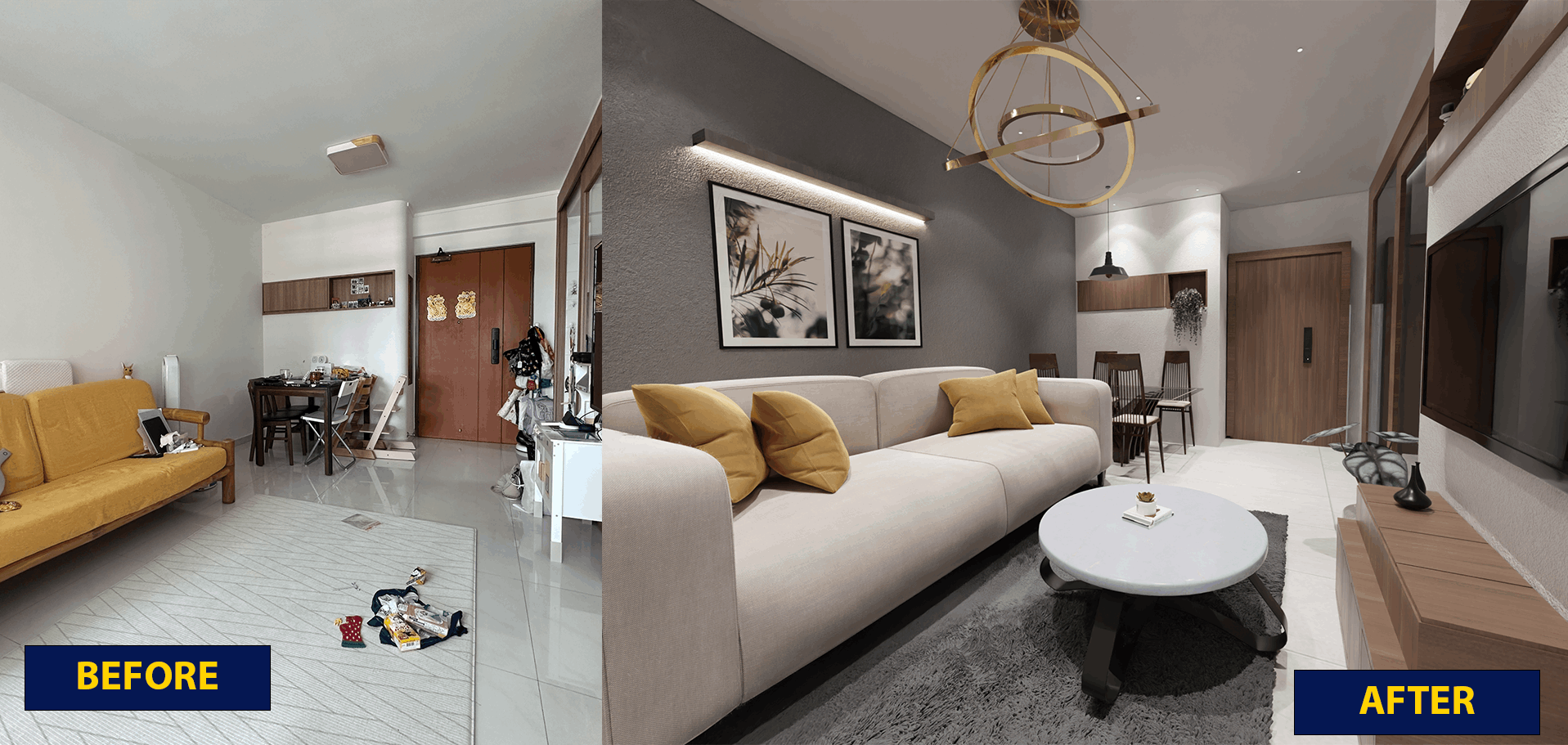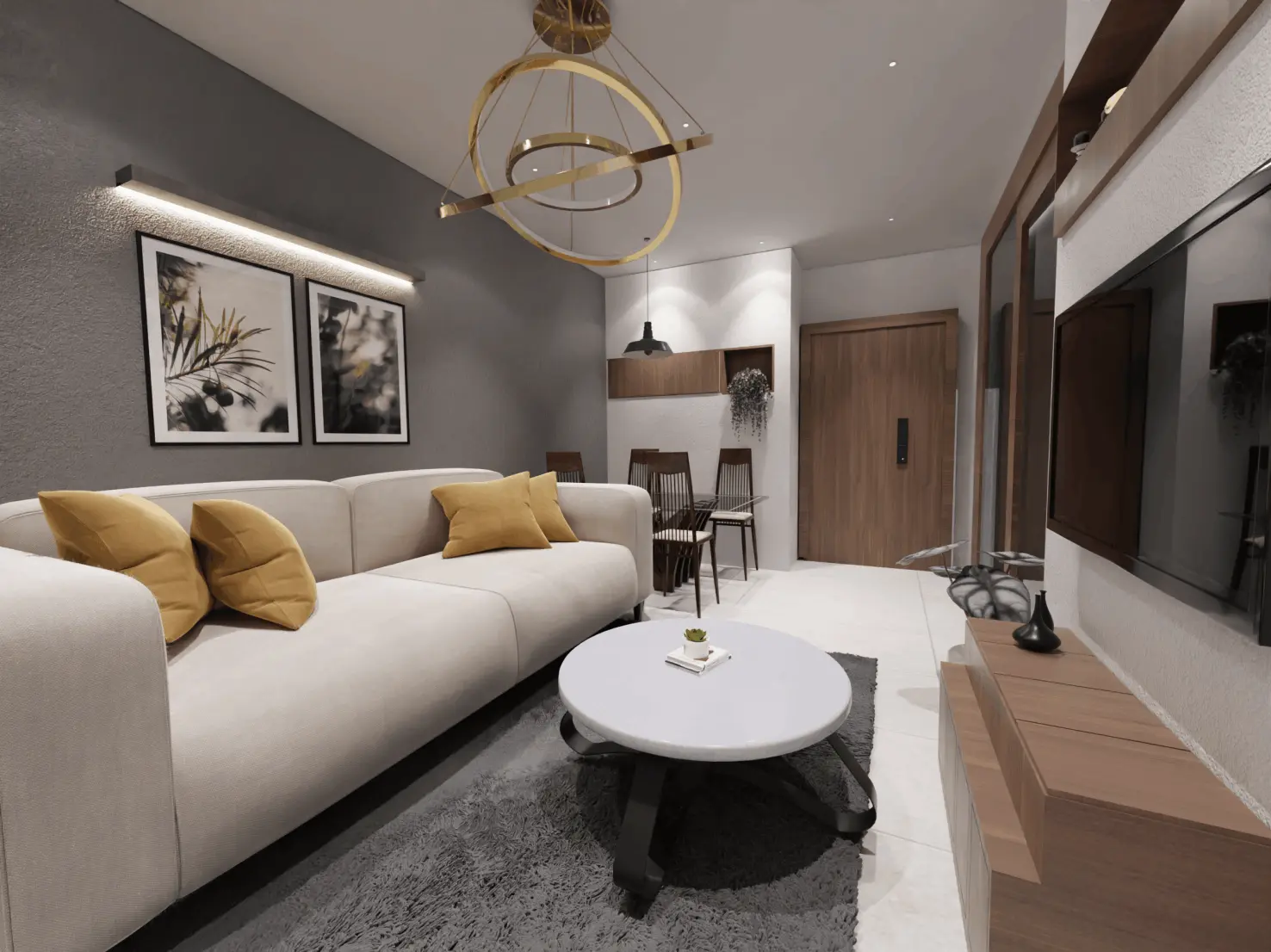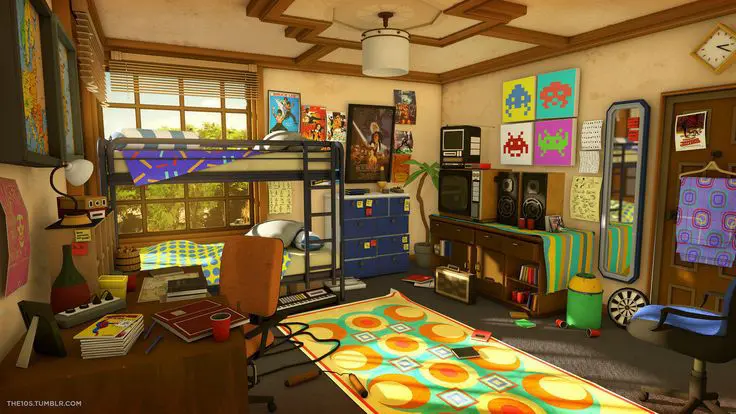Virtual vs. Physical Staging: A Comparative Analysis for Real Estate Success


In the competitive real estate market, presenting a property in its best light is crucial to attracting buyers and securing top offers. Staging, whether virtual or physical, plays a pivotal role in transforming a property to showcase its full potential. As technology advances, real estate agents and sellers have more tools at their disposal to create stunning presentations. However, deciding between virtual and physical staging can significantly impact how quickly and profitably a property sells.
This blog delves into the pros and cons of virtual and physical staging, ultimately advocating for virtual staging as a more versatile, cost-effective, and modern solution for real estate marketing. While both methods have their merits, virtual staging offers unique advantages that align with today’s fast-paced digital world. However, to maximize the effectiveness of virtual staging, it’s essential to ensure clear communication with potential buyers, particularly about how the images they see reflect possibilities rather than current realities.

Source: OneToBeam
Before diving into the comparative analysis, it’s important to understand what each type of staging entails.
Virtual Staging involves using computer-rendering software to create photo-realistic images of a property. Professional photographers capture high-quality images of the home, which are then enhanced digitally. This process can include altering wall colors, adding furniture and decor, and even updating landscaping. Virtual staging is particularly useful for empty properties or homes with outdated decor, as it allows the stager to completely reimagine the space.
Physical Staging, on the other hand, involves physically bringing furniture, artwork, and accessories into a home to enhance its appeal. This can involve using the homeowner’s existing furniture, renting new pieces, or a combination of both. The goal is to create a welcoming, attractive environment that helps potential buyers visualize themselves living in the space.

Source: OneToBeam
Virtual staging is a relatively new tool in the real estate agent’s arsenal, but its popularity has soared in recent years. Here’s why:
1. Cost-Effectiveness
One of the most significant advantages of virtual staging is its cost-effectiveness. Physical staging requires the rental or purchase of furniture, accessories, and often, the services of a professional stager. These costs can quickly add up, particularly if the home remains on the market for an extended period. Virtual staging, however, requires only the initial cost of the digital renderings, making it a much more affordable option for sellers.
Moreover, because virtual staging is done digitally, there are no storage fees for furniture, no costs associated with moving items in and out of the home, and no need to pay for any potential damage to the property during the staging process. This affordability makes virtual staging accessible to a wider range of sellers, allowing even those with modest budgets to present their homes attractively.
2. Faster Turnaround
In the real estate world, time is money. The longer a property sits on the market, the more it costs the seller in terms of carrying costs, such as mortgage payments, property taxes, and utilities. Virtual staging offers a much faster turnaround time than physical staging. Once the photos of the home are taken, the digital staging process can often be completed in a matter of days, if not hours.
This speed allows real estate agents to list properties more quickly, which can be particularly advantageous in a fast-moving market. It also means that if a property needs to be restaged to appeal to a different audience or to reflect changes in the market, these updates can be made quickly and efficiently.
3. Flexibility and Customization
Virtual staging offers unparalleled flexibility and customization options. Because everything is done digitally, there are no limits to what can be created. Want to showcase how the living room would look with a modern, minimalist aesthetic? Or perhaps a cozy, traditional style? With virtual staging, you can easily create multiple versions of the same room, each catering to a different potential buyer demographic.
This flexibility also extends to the property’s exterior. Virtual stagers can update landscaping, change the color of the home’s exterior, or even add architectural features that don’t currently exist. This level of customization allows real estate agents to present a property in the best possible light, tailored specifically to the tastes and preferences of the target market.
4. No Disruption to Homeowners
Physical staging can be disruptive to homeowners, particularly if they are still living in the property while it’s on the market. Furniture and personal belongings may need to be moved out, repairs and painting might be required, and the home may need to be kept in show-ready condition at all times. This can be a stressful and inconvenient process for homeowners.
With virtual staging, there is no need for any physical changes to the property. Homeowners can continue living in their space without interruption, and the virtual staging can take place entirely behind the scenes. This convenience is a significant advantage for sellers who are looking to minimize the hassle and stress associated with selling their homes.
The Pros and Cons of Virtual Staging
While virtual staging offers many advantages, it’s important to consider the potential downsides as well.
Pros:
- Cost-Effective: Virtual staging is significantly less expensive than physical staging.
- Fast Turnaround: Digital staging can be completed in a matter of days.
- Highly Customizable: Multiple design styles can be created to appeal to different buyer demographics.
- Non-Intrusive: There is no disruption to the homeowner’s daily life.
Cons:
- Potential for Miscommunication: Buyers may feel misled if they are not aware that the images have been virtually staged. This makes transparency and communication key when using virtual staging.

Source: OneToBeam
Physical staging has been the go-to method for real estate agents for decades. It involves creating a tangible, in-person experience for potential buyers, allowing them to walk through a space and see how it feels with carefully selected furniture and decor.
1. Tangible, In-Person Experience
One of the biggest advantages of physical staging is that it allows buyers to experience the space in person. There is no substitute for walking through a home and seeing how it feels in real life. The textures, the way the furniture is arranged, and the overall ambiance of the space can have a significant impact on a buyer’s impression of the property.
This tangible experience can be particularly important for buyers who have a hard time visualizing how a space could be used. Physical staging removes this barrier by presenting a fully furnished and decorated home that feels warm, inviting, and ready to move into.
2. Immediate Emotional Connection
Physical staging can create an immediate emotional connection between the buyer and the property. When a home is beautifully staged, buyers can picture themselves living in the space, which can make them more likely to make an offer. This emotional connection is one of the most powerful tools in a real estate agent’s toolkit, and it’s something that physical staging does exceptionally well.
3. Real-Life Furnishings
With physical staging, the furnishings and decor are real, tangible items that buyers can see, touch, and interact with. This can be a significant advantage, particularly for buyers who are concerned about how their own furniture and belongings will fit in the space. Seeing the scale and proportions of the furniture in person can help alleviate these concerns and make the property feel more “real” to potential buyers.
The Pros and Cons of Physical Staging
While physical staging offers many benefits, it also comes with its own set of challenges.
Pros:
- Tangible Experience: Buyers can walk through the home and experience it in person.
- Emotional Connection: Physical staging can create a strong emotional connection between the buyer and the property.
- Real Furnishings: The furniture and decor are real, allowing buyers to see how their own belongings might fit in the space.
Cons:
- High Cost: Physical staging can be expensive, particularly for larger homes or luxury properties.
- Time-Consuming: The process of staging a home physically takes time, both in terms of setup and removal.
- Disruption to Homeowners: Physical staging can be disruptive, particularly if the homeowner is still living in the property.

Source: OneToBeam
When comparing virtual and physical staging, it’s clear that both have their merits. However, in today’s digital age, virtual staging offers several key advantages that make it the superior choice for many real estate agents and sellers.
1. Cost and Efficiency
Virtual staging’s cost-effectiveness is a major advantage, particularly in a market where every dollar counts. With virtual staging, sellers can achieve a stunning, professionally staged look without the high costs associated with physical staging. This allows them to allocate more of their budget to other aspects of the marketing campaign, such as high-quality photography, video tours, or targeted advertising.
The efficiency of virtual staging is another major benefit. With faster turnaround times, properties can be listed more quickly, giving sellers a competitive edge in the market. Additionally, the ability to make quick updates and adjustments to the virtual staging means that the property can always be presented in the best possible light, no matter how the market evolves.
2. Flexibility and Reach
The flexibility of virtual staging allows real estate agents to tailor the presentation of the property to a specific target audience. Whether it’s young professionals, growing families, or empty nesters, virtual staging can be customized to appeal to the demographic most likely to be interested in the property.
Furthermore, because virtual staging is digital, it can easily be shared online, reaching a wider audience. In a world where many buyers begin their home search online, having a visually stunning, well-staged property that can be easily viewed on a computer or mobile device is a significant advantage.
3. Communication is Key
While virtual staging offers many benefits, it’s crucial to communicate clearly with potential buyers about how the images have been created.
Transparency is key to ensuring that buyers understand that the photos they see are enhanced to show the property’s potential. This can be easily achieved by including a note in the property description or on the photos themselves, stating that the images have been virtually staged.
By being upfront and transparent, real estate agents can avoid any potential disappointment or confusion when buyers view the property in person. This honesty not only helps build trust with potential buyers but also ensures that they are fully informed, leading to a smoother and more successful transaction.
Both virtual and physical staging have their place in the real estate world, but when it comes to cost-effectiveness, flexibility, and efficiency, virtual staging is the clear winner. In today’s fast-paced, digitally-driven market, virtual staging offers real estate agents and sellers the tools they need to present properties in the best possible light, reach a broader audience, and sell homes faster and at higher prices.
However, the success of virtual staging hinges on clear communication with potential buyers. By being transparent about the use of virtual staging, real estate agents can ensure that buyers are fully informed, leading to a positive experience for all parties involved. As the real estate industry continues to evolve, virtual staging is set to become an increasingly important tool for showcasing properties and achieving sales success.